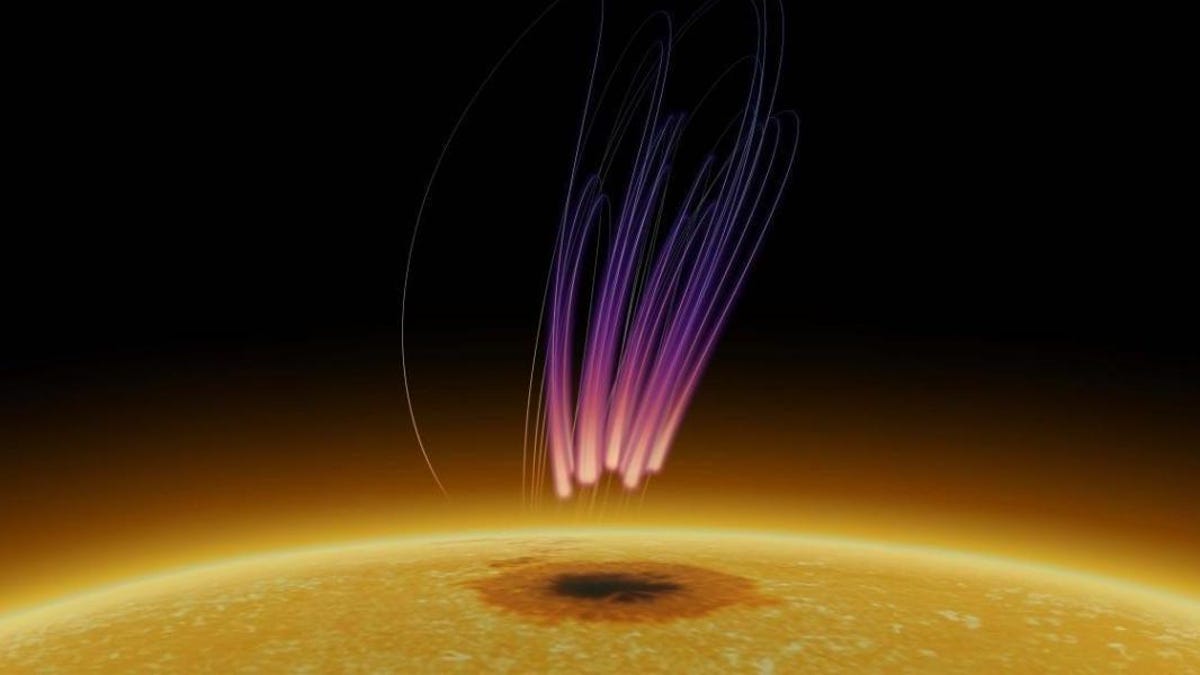Radio Emissions Detected Above Sun’s Surface Have “Aurora-Like” Qualities
A team of astronomers has detected radio emissions about 24,855 miles (40,000 kilometers) above a dark region on the Sun with aurora-like qualities.
The emissions were seen above a sunspot— a dark region on the Sun’s surface. Magnetic fields around sunspots are about 2,500 times stronger than Earth’s, according to the National Weather Service. This causes the temperature in sunspots to be cooler than the brighter parts of our star’s surface.
Detected by the Jansky Very Large Array in April 2016, the research team recently reported their analysis of the data, describing the emissions as “aurora-like” based on their spectra, polarization, and duration, among other factors. The team’s findings were published in Nature Astronomy this week.
Lead author Sijie Yu, an astronomer at the New Jersey Institute of Technology’s Center for Solar-Terrestrial Research (NJIT-CSTR), emphasized the discovery, stating, “We’ve detected a peculiar type of long-lasting polarized radio bursts emanating from a sunspot, persisting for over a week. This is quite unlike the typical, transient solar radio bursts typically lasting minutes or hours. It’s an exciting discovery that has the potential to alter our comprehension of stellar magnetic processes.”
Auroras on Earth occur when charged particles from the Sun interact with Earth’s atmosphere and magnetic field, causing the gases in our atmosphere to glow in various colors, as explained by NASA.
Yu added, “Unlike the Earth’s auroras, these sunspot aurora emissions occur at frequencies ranging from hundreds of thousands of kHz to roughly 1 million kHz — a direct result of the sunspot’s magnetic field being thousands of times stronger than Earth’s.”
The research team doesn’t believe that the sunspot radio emissions are linked to solar flares, instead suggesting that occasional flares feed electrons into magnetic field loops that hinge on the sunspots. They also speculate that other stars could have similar “sunspot radio auroras.”
Furthermore, NASA’s Solar Orbiter provides insights on solar dynamics, with its ability to fly directly through coronal mass ejections, while the Parker Solar Probe has ventured into the Sun’s corona, allowing researchers to better understand our local star’s processes.
Despite billions of years of powering life on Earth, the Sun still holds secrets from us. Fortunately, researchers are making strides in unraveling the enigmatic nature of our nearest star.
More: How Do We Know When the Sun Will Die?


